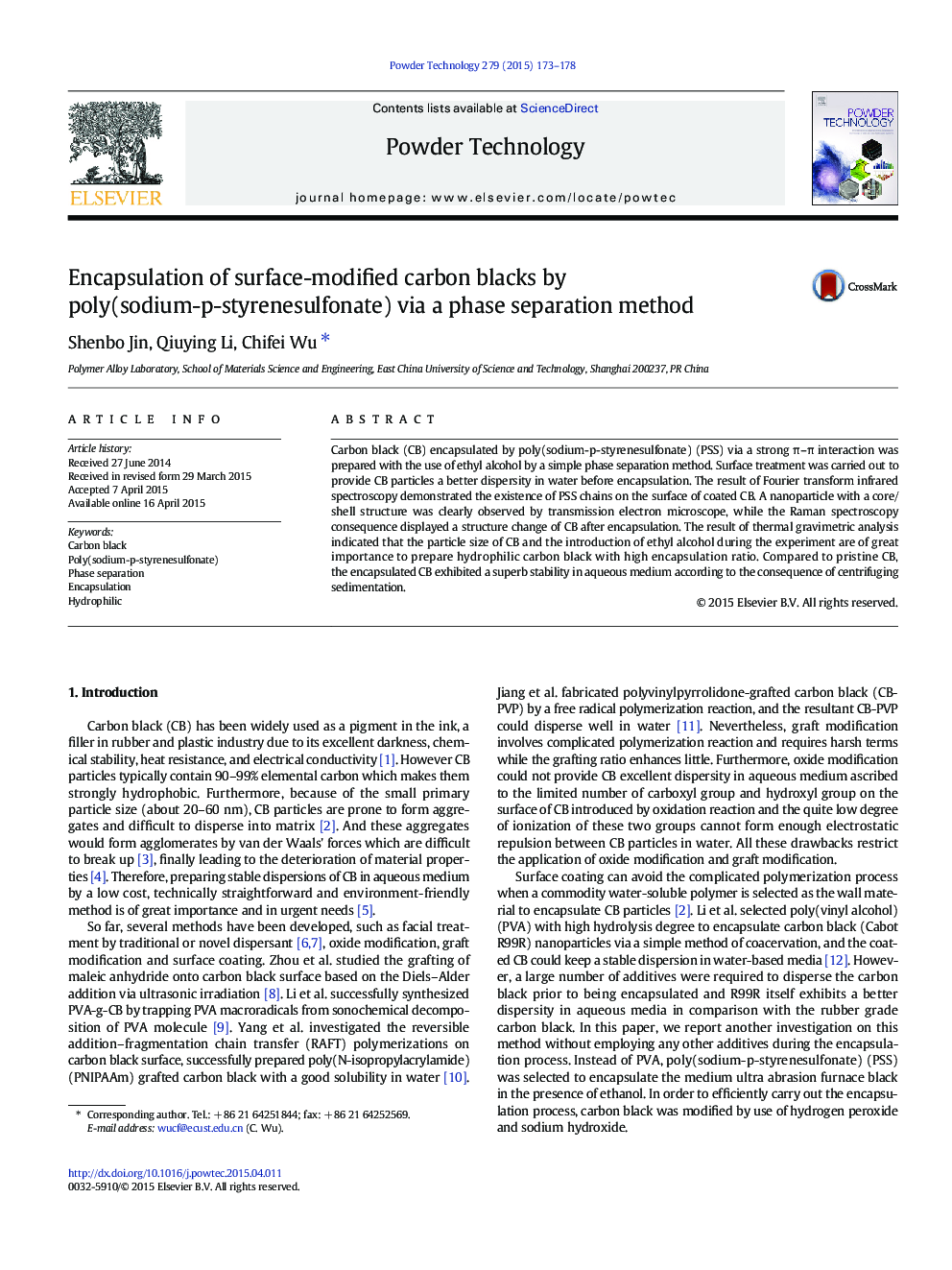| Article ID | Journal | Published Year | Pages | File Type |
|---|---|---|---|---|
| 235572 | Powder Technology | 2015 | 6 Pages |
•PSS-encapsulated Carbon black was prepared by a phase separation method.•A nanoparticle with a core/shell structure was clearly observed by TEM.•Encapsulation ratio relies on the particle size and the introduction of ethanol.•The encapsulated CB displayed a superb stability in aqueous medium.
Carbon black (CB) encapsulated by poly(sodium-p-styrenesulfonate) (PSS) via a strong π–π interaction was prepared with the use of ethyl alcohol by a simple phase separation method. Surface treatment was carried out to provide CB particles a better dispersity in water before encapsulation. The result of Fourier transform infrared spectroscopy demonstrated the existence of PSS chains on the surface of coated CB. A nanoparticle with a core/shell structure was clearly observed by transmission electron microscope, while the Raman spectroscopy consequence displayed a structure change of CB after encapsulation. The result of thermal gravimetric analysis indicated that the particle size of CB and the introduction of ethyl alcohol during the experiment are of great importance to prepare hydrophilic carbon black with high encapsulation ratio. Compared to pristine CB, the encapsulated CB exhibited a superb stability in aqueous medium according to the consequence of centrifuging sedimentation.
Graphical abstractUnlike the pristine CB, a single encapsulated nanoparticle in a size of about 110 nm is clearly observed in the photo of the encapsulated CB. Among the observed nanoparticle, a distinct PSS layer can be seen on the surface of PNCB-2 while the dark core corresponds to the CB particles.Figure optionsDownload full-size imageDownload as PowerPoint slide
